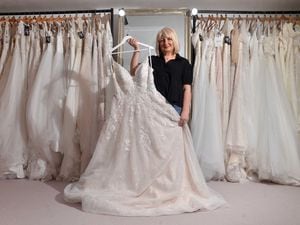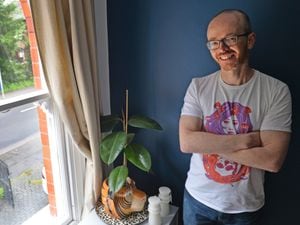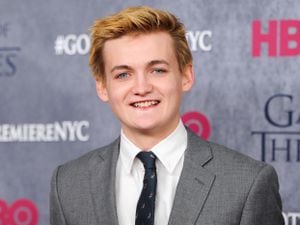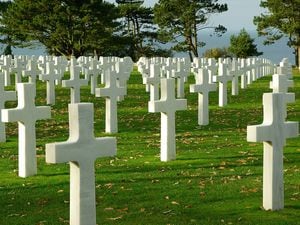Flashback to 1995: Brothers putting art lovers in the picture
Today, most artists will have some kind of online presence helping to connect their work with potential customers.
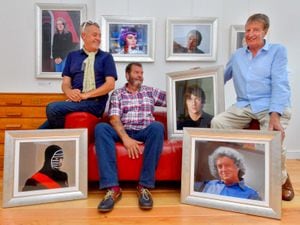
Back in 1995, the internet was still in its infancy but three Bridgnorth brothers could already understand its potential.
The Bingham family - Tim, Ian and David - were putting art lovers across the world in the picture about their paintings via the internet. They made 30 pieces of work available to be viewed online and believe they were the only independent artists in the country publicising their work in this way.
The brothers had been sponsored by Slough-based electronics firm Goldstar UK Ltd and were hopeful that it would lead to commissions coming in from all over the globe.
The siblings had started working together in the early 1990s after developing their work independently.
They were introduced to art at an early age by their father Bill, who was an amateur artist, and uncle Jimmy, a professional, who shared a studio with prominent Irish painter, Daniel O’Neill.
“There were always paints and easels and work under way in the house so we were encouraged to take an interest,” Tim said during an interview with the Star.
“In fact, whenever Uncle Jimmy used to come over to stay, he’d pay for his board by knocking out a painting. The fact that his work used to sell for between £2,000 and £5,000 made it quite a bargain.”
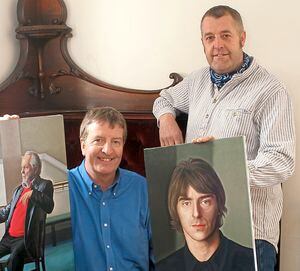
David and Tim developed their talents, the former at Shrewsbury College of Art and Gloucester School of Art and the latter at Telford College of Art and Technology.
“After that we worked independently for quite a while, then in the early 1990s me, Ian and Tim shared a studio space in Bridgnorth. Then we bought a house together in the middle of Bridgnorth and things developed from there,” explained David.
They became known for their portraits, particularly their People of Our Time series which included the likes of Charlton Heston, Paul Weller, Honeysuckle Weeks and Noddy Holder. The brothers met Heston, who died in 2008 aged 84, in 1995 when the American visited England to film his part of First Player in Kenneth Branagh’s star-studded movie version of Shakespeare’s Hamlet.
“He sat for us for a day at Shepperton Studios during breaks in filming,” explained David. “It was a very enjoyable experience. He was very relaxed with us, although very clear on how he wanted to sit. We tend to go for people who we are genuinely interested in and that we admire. I think that comes through when we are working and that helps the relationship.”
The resulting portrait of Heston is a large depiction of the actor in the foreground surrounded by images reflecting his long movie career in a medieval tapestry style. The star was delighted with the work, as were his family.
Commissions inevitably came in as word circulated among the showbusiness community about the excellence of the early portraits, which meant the Binghams began to forge something of a reputation.
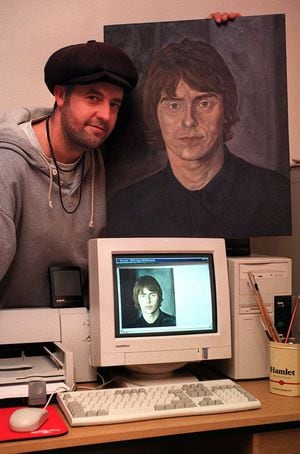
It had all started with their hero, the singer/songwriter Weller.
“We sent him a letter with examples of what we do and asking if he would sit for a portrait. We heard nothing for six months then a handwritten letter arrived from him saying how he really liked the work,” Tim told the Star.
“He invited us to Manor Studios, Mike Oldfield’s place, where he was recording his album Stanley Road and he bought two or three paintings. We painted a portrait of him and a portrait of his guitar technician who had been with him 20 years. He also bought a landscape which he said reminded him of the area that he based ‘Wild Wood’ on,” added David.
Their painting of Weller was on display as part of an exhibition held in Bridgnorth last year which showcased their eclectic repertoire of portraits. When it comes to creating artwork, they take varying roles with each portrait they create, often putting all three of their brushes to the same canvas.
“In the Renaissance artists often worked together as families so that isn’t a first, albeit unusual. The benefits with this sort of work is you have three people to sit down with each person and get as much information about them as possible – the more information you have the better portrait you can create,” said David.

